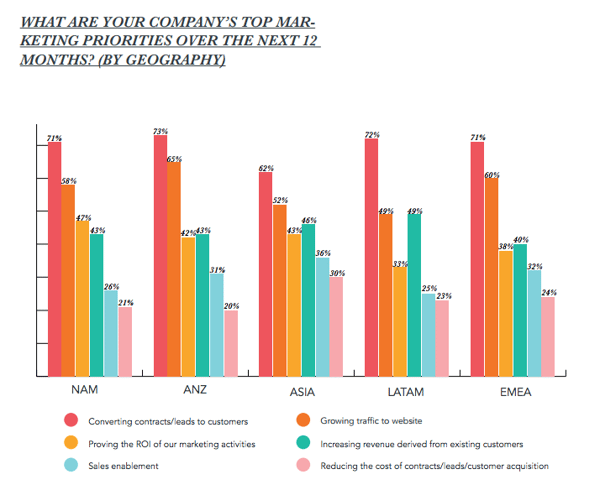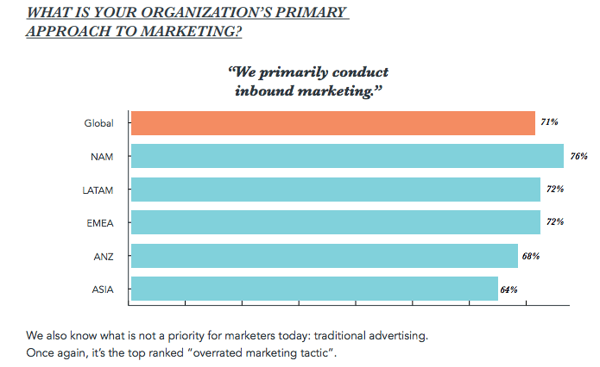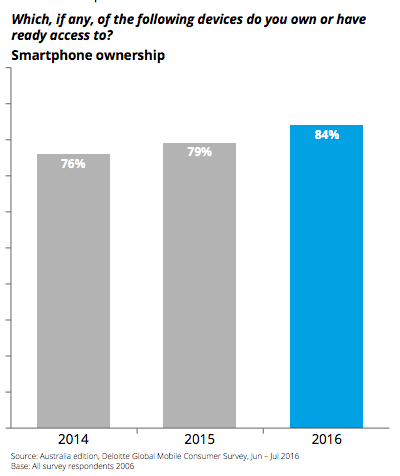Inbound Marketing has found it's place in the Australian sales and marketing world. There are more businesses working toward creating a more magnetic brand than focus on push tactics like advertising everywhere and interrupting the natural cycle of consuming content. The journey away from print ads to cold calling has been a slow but sure one. There's a lot for leaders and teams to keep up with this year. Read on to see what strategies you can leverage on to win in 2018.
According to HubSpot's State of Inbound 2017 Report, the top marketing priorities for ANZ include converting more leads to customers and growing website traffic. Inbound is a great approach to sales and marketing efforts that will not onl help generate traffic but also get more qualified leads who are more likely to convert. Review our summary of 2017's key inbound marketing trends here.

The region's priorities have also moved from traditional to inbound marketing as their focus. A word of caution though, some industries need the in-person conversion to make the sale. This might include roadshows and other exhibits.

Much like how some digital agencies in Australia that propogate all these alarmist messages of how changing status quo to go Inbound is the only way to survive competition, here's a reminder: Inbound transcends from online to offline and vice versa. It's not about changing status quo of your business but creating a strong support system that makes doing business more human by making sales and marketing interactions nicer and helpful.
To stay ahead, here are the top 4 trends that can help your brand stand out:
1. Value beyond the sci-fi jargon
There's a lot of jargon in today's world. Artificial Intelligence tops that list. Little do people know that beyond the sci-fi connotations, it has to do with language processing, decision-making, live chats (yes, we love Drift) and even your music choices - think Spotify and how it picks 'your kind of songs' for you.
 Everything you do needs to address the value exchange. As consumers move away from being pitched and choose to be educated instead, their reading and learning of what they need to know is very important. So beyond the technology you pick and the facade of jargon you learn, it's about the value you provide.
Everything you do needs to address the value exchange. As consumers move away from being pitched and choose to be educated instead, their reading and learning of what they need to know is very important. So beyond the technology you pick and the facade of jargon you learn, it's about the value you provide.
Let technology help you automate the tasks you don't need to do and focus on value creation. If you're a business owner juggling multiple tasks, so you can use an extension that schedules your email to go out another time or another day even allowing you to target a different time zone.
2. Build or Buy Software
Most businesses have to pick which direction they take - would you rather build or buy? Technology only provides utility when there's human input. Chatbots (get Growthbot for Slack, we love it) for example mimic human conversation as the 'input' is usually developed for computing to serve as virtual agents. You can choose to create a phenomenal software online for others to use potentially as a SaaS susbcription or you can buy from existing vendors and make the most of the cloud-based world that has made it easier for software startups. See how SaaS businesses can leverage on HubSpot Sales and CRM to map the entire customer experience.
3. Transparency Trumps Tales
There's no brand that's done well by stepping all over the 'building trust' factor. It's vital to be authentic in the age of social media where people are more likely to be someone they're not rather than be who they are. Similarly it is with brands - it's important to clear out the air and be transparent. Like Simon Sinek says, "People don't buy what you do they buy why you do it." Start working on the authenticity of your brand and be transparent about your goals and motivations.
4. Voice over Typing
Mobile ownerhsip is up to 84% in Australia. That means we need to start thinking about how voice-enabled searches will be preferred over typing it all out labouriously on a keyboard. ComScore says 50% of all searches will be done by voice in 2020. Voice assistants are also booming world over.
 Voice doesn't seem intrusive and also has less perceived risk for the user therefore 2018 looks like the year people will talk more and want solutions found on their mobile.
Voice doesn't seem intrusive and also has less perceived risk for the user therefore 2018 looks like the year people will talk more and want solutions found on their mobile.
Humans can speak 150 words per minute while typing on mobile tops out at 40 words per minute.
So for everyone who talks more than they type, all the latest gadgets like Google Home and Amazon Echo are adding value to your experience with living and you can ensure that you make it easier for all your prospects who prefer to talk over type learn more about your brand as they speak to their mobile device and have their search answered.
It's time for sales and marketing to put value before jargon and really create awesome ways to connect with today's consumer. Don't steer away from what's human by using buzz words and complicating the buyer's journey. Best to adapt and respond to a world that's inbound.
Tags:
Marketing + Automation
February 7, 2018

